Fred Van Lente, writer of the newly published The Comic Book Story of Basketball, takes you inside the legendary Spalding showdown…
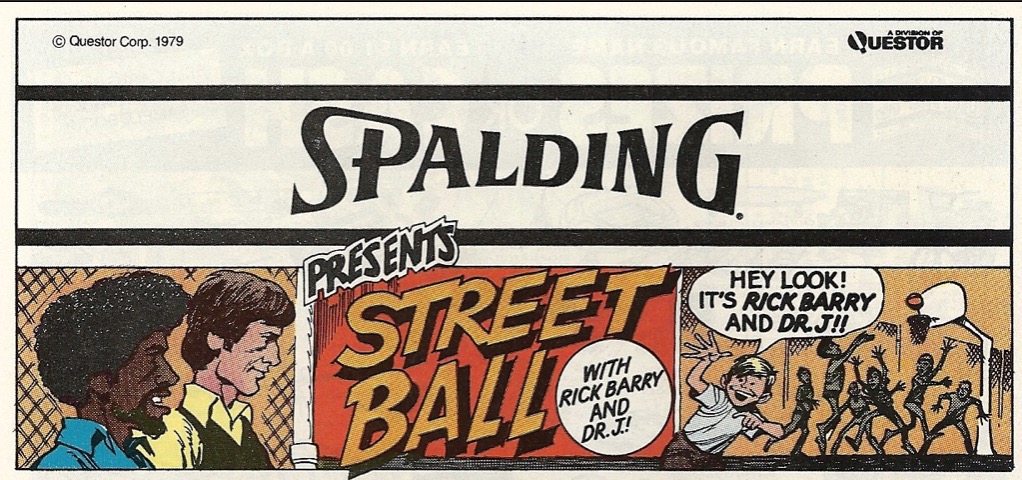
Fred Van Lente — comics scribe, 13th Dimension contributor and all-around bon vivant — has a new one out this week that’s near and dear to his b-ball heart: The Comic Book Story of Basketball, which is exactly what the title suggests: a history of roundball in square panels.
It’s a groovy trip whether your a comics reader or a hoops fan — but especially if you’re both. So on the occasion of the book’s release, Fred (Dr. F to those in the know) has put together an Eisner-worthy exploration of the greatest basketball comic in the history of mankind — the 1970s Spalding ad starring Julius Erving and Rick Barry.
Dig it.
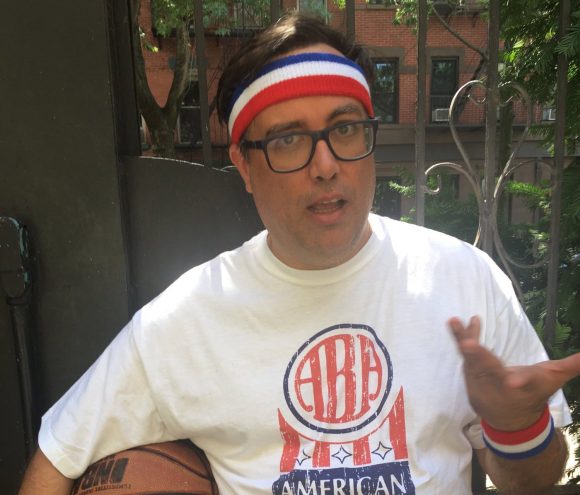
—
By FRED VAN LENTE
Hey gang, I have a new book out today I’m very proud of, The Comic Book Story of Basketball, a fast-break history of hoops with terrific art from Joe Cooper and dazzling colors by Dave Swartz.
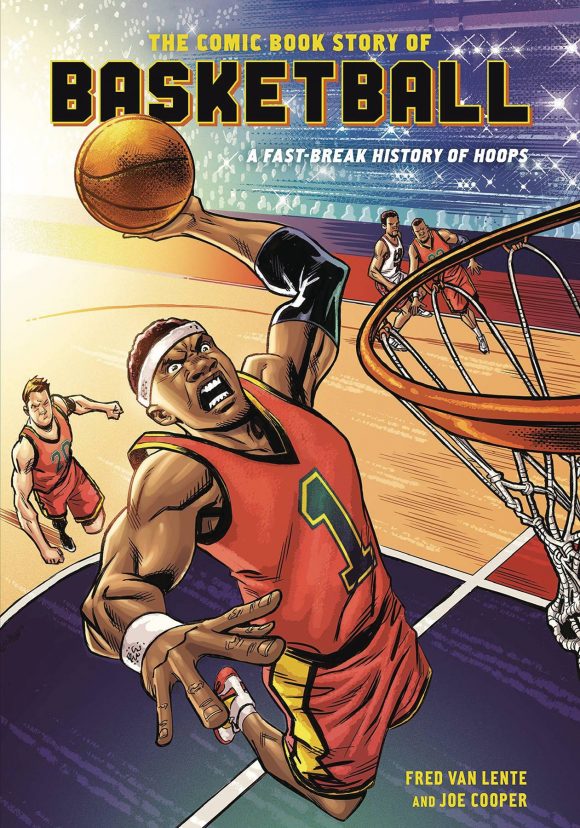
To celebrate, I thought I’d do a panel-by-panel breakdown of the greatest basketball comic ever created until mine, the 1979 Spalding ad that graced the back cover of many a comic book when I was a kid. This one-pager is quite possibly the only reason I knew basketball existed, because as a child I was a giant nerd, not the hip, happening wordsmith I am today.
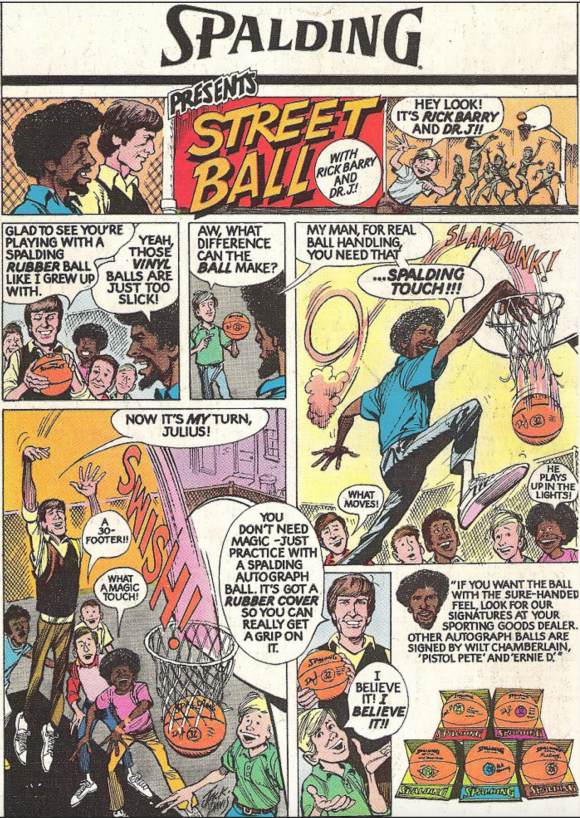
The first thing that’s obvious about this ad is that it was drawn by Jack Davis, who is easily in the Top 5 or 10 G.O.A.T. comic book artists. This was the man who started out in Tales From the Crypt and Mad and went on to become one of the most recognizable commercial artists of his era. In the sports realm, for example, he drew the poster for The Bad News Bears.
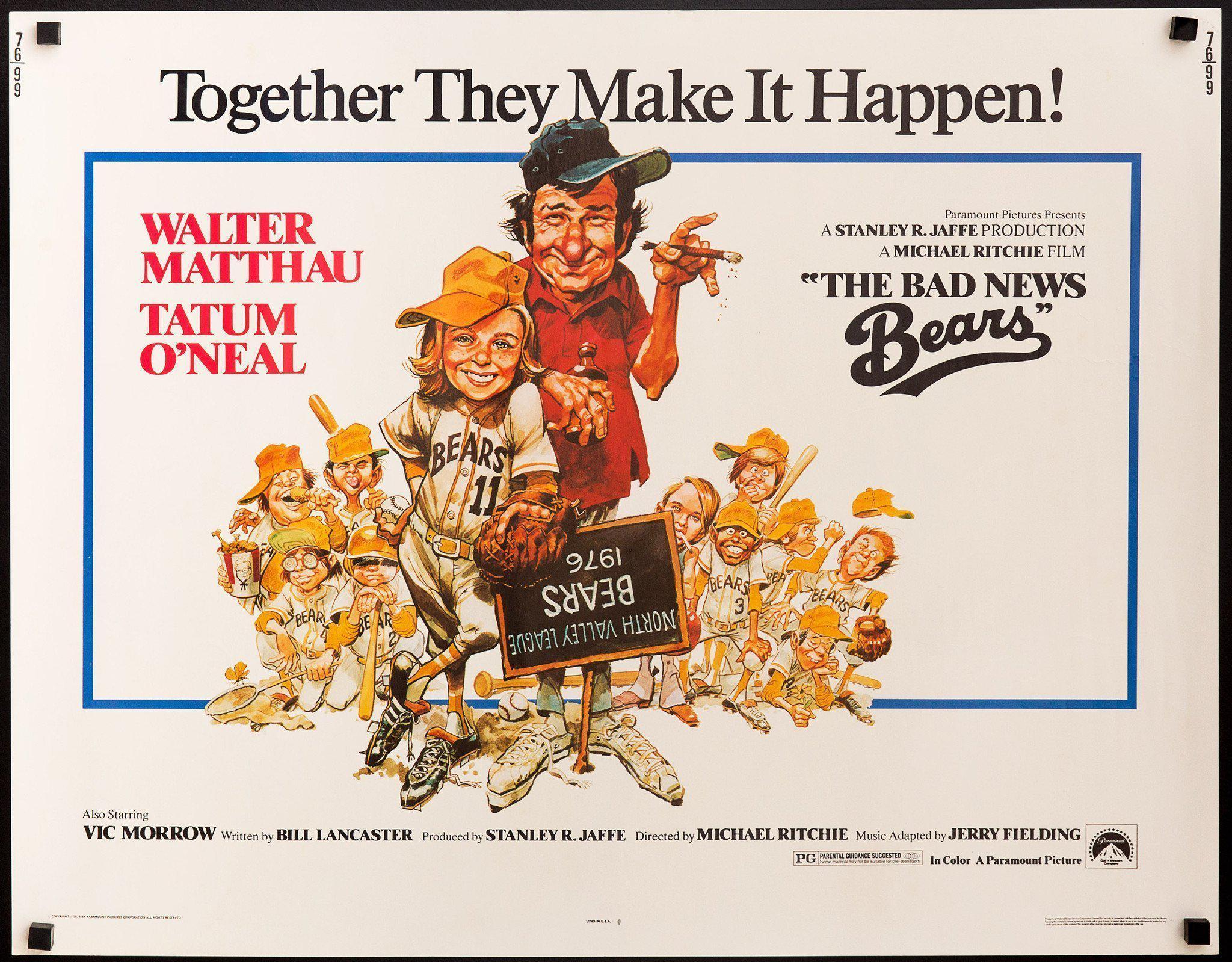
Is Jack Davis the Michael Jordan or Kareem Abdul-Jabbar of comics? Probably not. But he very well could be the, uh, Walt “Clyde” Frazier. Why? Because they’re both from Atlanta. BOOM! Mic drop. These comics/sports comparison are easy.
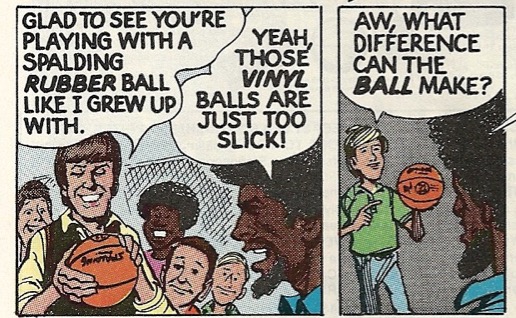
Rick Barry and Dr. J praise the children for their choice in ball, which the children immediately question, because children are stupid. I was recently chided by a friend for playing with a rubber ball and not a leather one, so this basketball snobbery is apparently indeed A Thing. Which one of Spalding’s late 1970s competitors sold a vinyl ball? My five minutes of Googling did not reveal an answer, so I’m going to assume this ad immediately put them out of business.
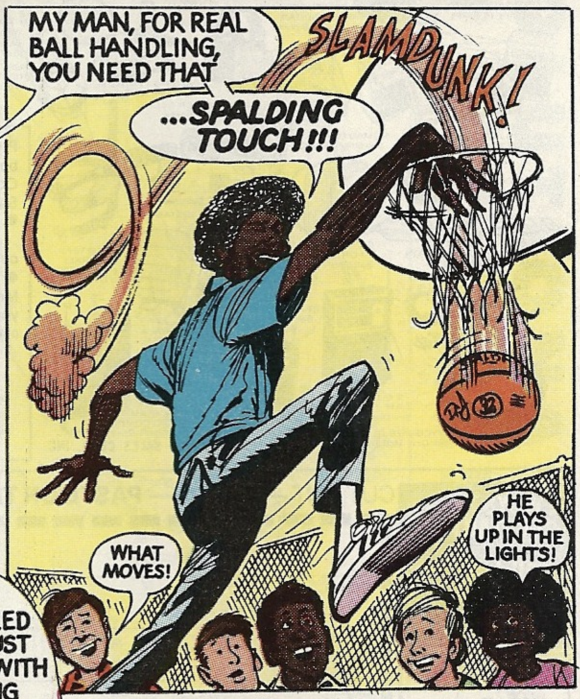
To say Julius “Dr. J” Erving was known for his dunking would be a bit of an understatement. He started out in the American Basketball Association (ABA), the upstart league that competed with the NBA in the ’60s and ’70s, until being absorbed into the bigger league. The ABA was known for its flashy play and had the very first Slam Dunk Contest, which Dr. J won as a member of the New York Nets — and just happens to be the spectacular double page spread by Joe and Dave in the center of The Comic Book Story of Basketball. Here’s a taste of the lead-up:
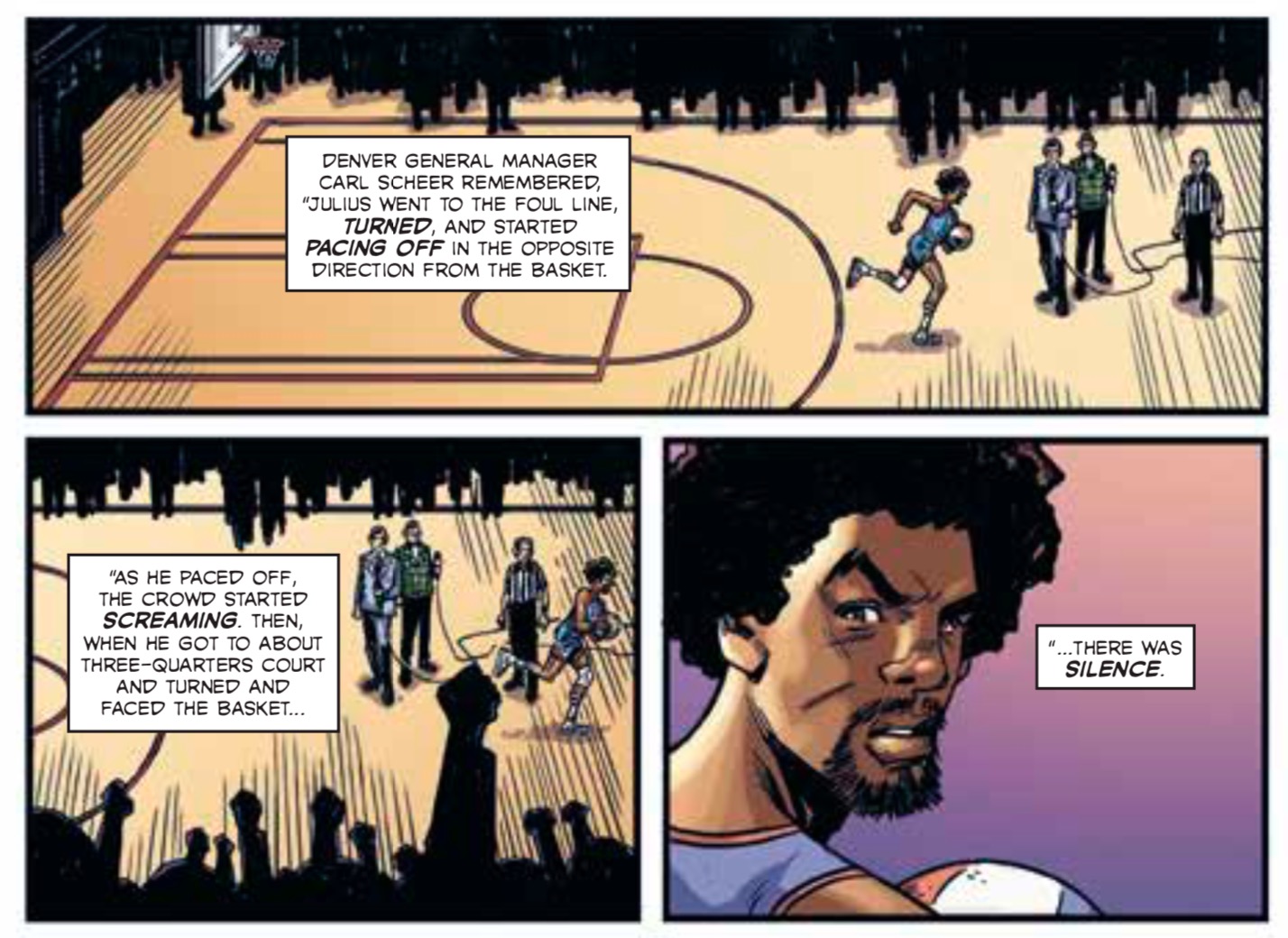
In the Spalding ad, the kids are equally impressed by Rick Barry’s three-pointer (another ABA innovation) as by Dr. J’s dunk, which many on Twitter claim proves the kids are, in fact, stupid, but I don’t know, I think they’re both cool, emphasizing different aspects of the game.
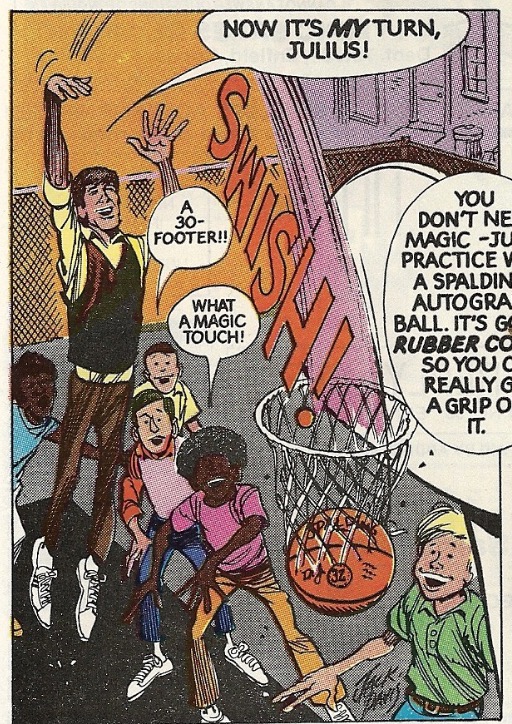
Barry was the offensive leader during the Golden State Warriors’ historic sweep of the powerhouse Washington Bullets in the 1975 NBA Finals; Barry was named Finals MVP. He retired in 1980, right after this ad started running, so draining this basket apparently took more out of him than Twitter could ever know.
Here’s how we deal with the birth of the 3-pointer in Comic Book Story, featuring ABA Commissioner George “Mr. Basketball” Mikan:
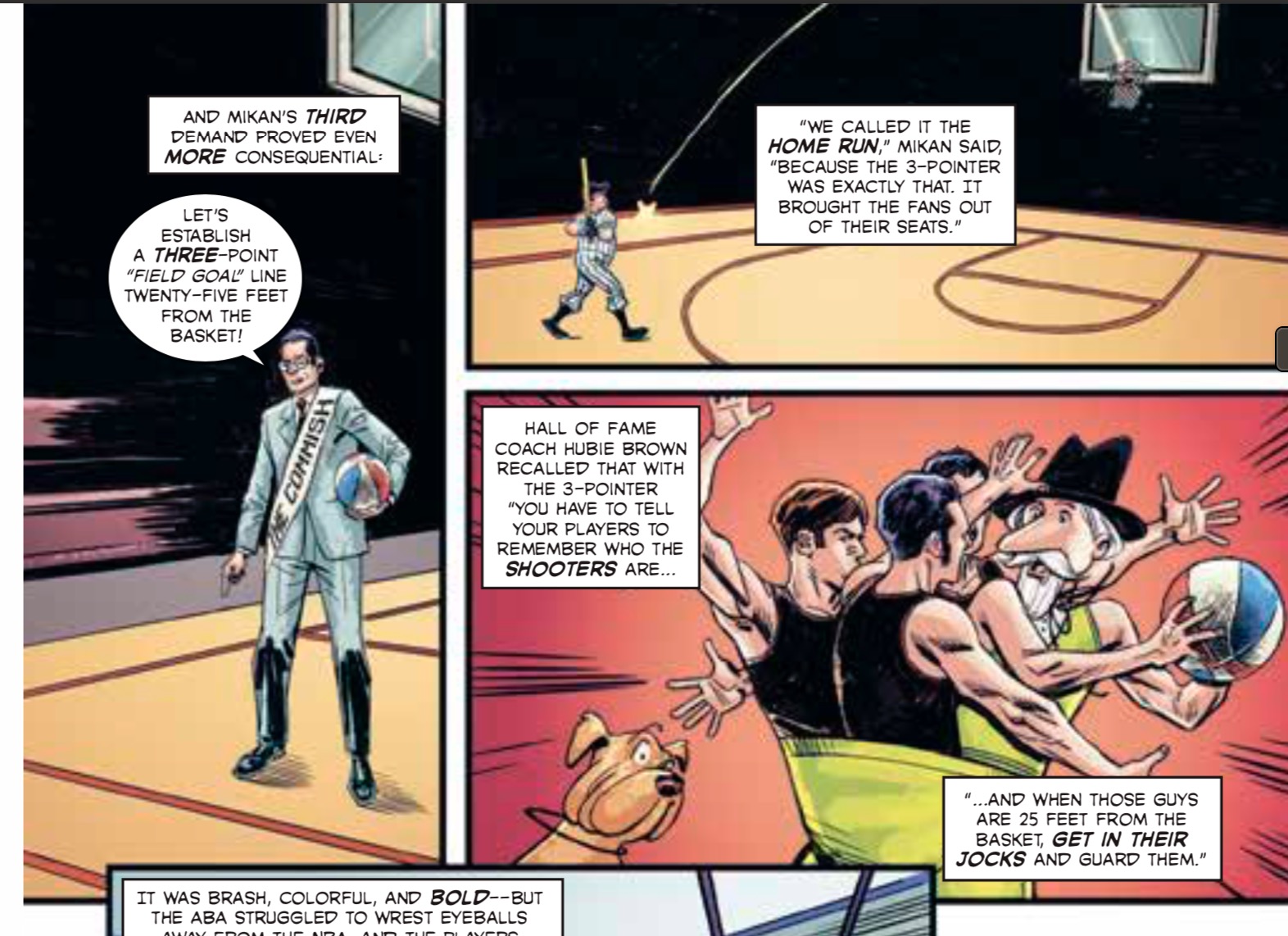
Meanwhile, the foolish child has seen the error of questioning the hoops wisdom handed him from on high (literally). We will forgive him for his lapse in judgment and not destroy him.
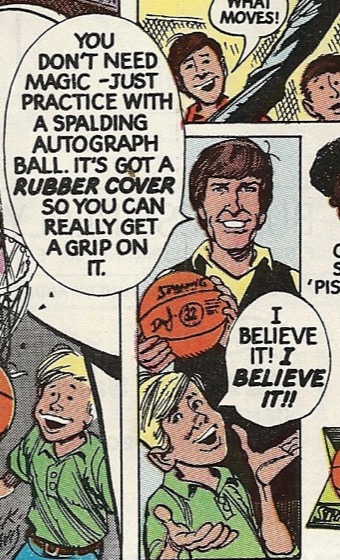
A good basketball grip is key; there’s a pretty cool exhibit on that at the Naismith Basketball of Fame in Springfield, Massachusetts, which is the only sports museum in the world surrounded by a Cold Stone Creamery.

It is a strange place off a 16-lane highway that appears to have been designed by aliens who briefly glanced at a Wikipedia article about basketball then just kind of went for it. The game maybe deserves better, is what I’m suggesting.
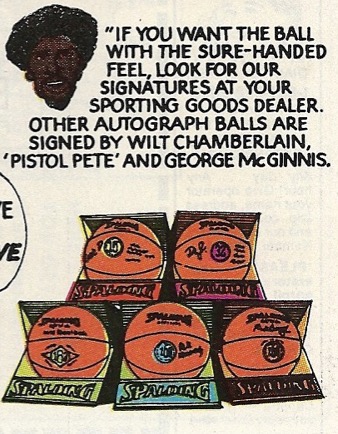
Were 1979 kids smart enough to know that Spalding basketballs weren’t literally autographed by players like Wilt “The Stilt” Chamberlain, the only NBA player to ever score 100 points in a single game, all-time NCAA scorer “Pistol” Pete Maravich, or Pacers legend George McGinnis? I doubt I was, but then I was seven.
But I was smart enough to write The Comic Book Story of Basketball, with terrific art by Joe Cooper and Dave Swartz. I love the game and comics equally, and it was cool to merge the two; for example, in an homage to an oft-homaged Spidey panel, here’s how we illustrate Chamberlain walking away from the Harlem Globetrotters to join the NBA:
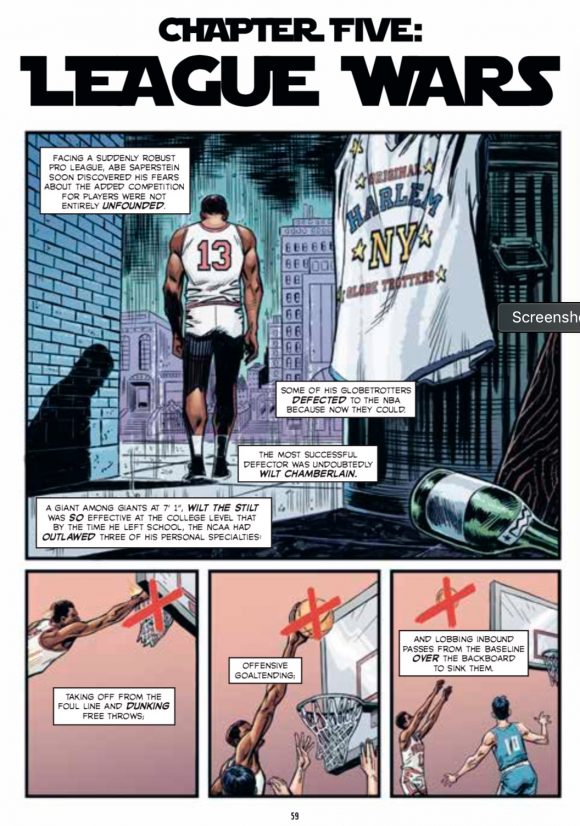
That’s just a tiny taste of this 164-page OGN. Get it everywhere books are sold, kids!
—
13th Dimension contributor Fred Van Lente is a comic-book writer, historian and playwright. The Comic Book Story of Basketball, a softcover published by Ten Speed Press, lists for $19.99. (Click here for more info.)
—
MORE From Fred Van Lente
— The TOP 13 ROGER STERN AVENGERS Stories — RANKED. Click here.
— The TOP 13 Issues of JACK KIRBY’s 1970s Return to MARVEL — RANKED. Click here.

September 22, 2020
I’m not a basketball fan (not even casually), but that Jack Davis ad is one of the greatest things ever.
September 22, 2020
This article definitely gets my spirits up. 🙂
September 22, 2020
The ad started running in 1975, shortly after Barry and the Warriors won the title. The original ‘third player’ mentioned in the final panel was Ernie DiGregorio, of the Buffalo Braves. By 1979, Magic and Larry were included.
Also, the ad never mentioned leather. I think that went out with the faceoffs after every basket.
January 31, 2024
Well, the ad made Barry look a lot more amazing that Dr. J. Dr. J.’s dunk didn’t look like much of a big deal. But the ad gives a huge panel to Barry’s swish, and the panel is so kinetic that it made Barry look like he had super powers. At least that was the impression I got as a kid.